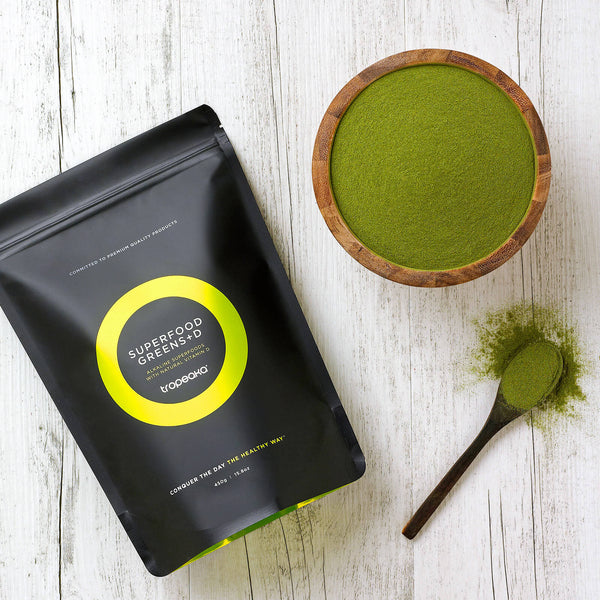Whether you're a newbie or a seasoned gym rat, below are 8 essentials worth knowing about!
S
o, you’ve got a gym membership. You’ve been to some of the group fitness classes and dabbled with the cardio equipment. You’re feeling better and making more mindful food choices (well, most of the time)!
You’re feeling content. Until you look across the gym to the booties and the biceps, the strength and the confidence… and deep down you want to join that community of badass goal-kickers. Only… you’re not really sure where to start or what to do.
Are you ready to step over to the cool side of the gym with confidence? Here are the 8 principles of weight training that every gym-goer needs to know!
1
First, know your vocabulary
Rep: One complete motion of an exercise. For example, 1 complete squat.
Set: A group of reps. For example, your workout might ask for 3 sets of 10 reps. The first 10 is 1 set, then you rest in between completing another 2 sets.
Rest: The time taken to recover between each set. Some exercises use a lot more energy than others and require more rest time.
Compound exercise: A movement where more than one joint is used. For example, a squat is a compound movement, as the hips, knees and ankles are all involved. Prioritise these for maximum results!
Isolation exercise: A movement where only one joint is used. For example, a bicep curl is an isolation movement, as the elbow is the only joint involved.
Supinated grip: A grip position where the lower arm is rotated so that the palm is facing upwards.
Pronated grip: The opposite of supination, so the palms will be facing down.
Superset: Performing two different exercises in each set with no rest in between. This keeps your heart rate elevated, involves more muscle fibres and burns a lot more calories!
Drop set: When you reach the point of failure, pick up lighter weights and continue the set until you reach failure again.
Pyramid set: With each set, you increase the weight and lower the reps.
Workout split: Splitting the muscle groups between different days of the week. For example, Monday might be hamstring and glute day, Tuesday is for arms, and so on.
Eccentric contraction: Lengthening of the muscle, also known as the negative portion of a lift. For example, the controlled downward movement in a bicep curl.
Concentric contraction: Shortening of the muscle, also known as the positive portion of a lift. For example, the upward movement in a bicep curl.
2
Overload
To overload is to expose your muscles to more weight, resistance or stimulus than they get from your normal daily activities. This is how we get stronger!
The weight you chose for any given exercise should allow you to complete the intended number of reps with correct form. If you struggle to maintain proper technique or fail to complete your first set, then you will need to decrease the weight.
On the other hand, if you can easily complete an extra few reps, then it’s best to choose a heavier weight. As your body recovers and adapts from one session to the next, you will slowly need to increase your weights.
3
Progression
As you get stronger, lifting the same weights won’t push you as much as it did when you started. To keep seeing results, you will need to continue overloading your muscles with more stimulus over time.

This progression, or progressive overload, is necessary because our muscles are continually adapting. However, you don’t always need to increase the weight. Lifting more weight than you did in your last session is just one of many ways to progressively overload your muscles.
Other methods include performing more reps with the same weight, increasing the training volume by performing more sets of each exercise, and using tempo changes to increase the time your muscles spend under tension.
4
Rest and recovery
The idea that muscles are built in the gym is a common misconception. The periods of rest between your training sessions is where the magic really happens!

During your workout, the stress of overload actually causes some minor damage to your muscle fibres. As you sleep, eat well and rest, your body gets to work repairing and reinforcing the little tears in your muscles fibres.
This process results in growth and adaptation, and can only take place while you’re at rest. There are two morals to this story. Firstly, never skip a rest day if you want to build a strong, toned body. And secondly, you shouldn’t be training any harder than you can rest.
beware of any stress or tension in muscles that shouldn’t be working in that particular exercise.
5
The mind-muscle connection
Lifting, pushing and pulling are pretty simple patterns, so it’s easy for the mind to wander off and leave our bodies to go through the motions. However, building our mind-muscle connection is as beneficial as meditation. Like in meditation, it’s important to come back to the present moment when we start thinking about our amazing post-workout meal in the middle of a set.
For every rep of every exercise, focus your attention on the muscle (or muscles) you’re working. Visualise the eccentric and concentric contractions, maintain awareness of your alignment and posture, and beware of any stress or tension in muscles that shouldn’t be working in that particular exercise.
6
Focus on the breath
Weight training can be better for mindfulness than many people realise! Focusing on the breath will come easily to those who already practice yoga or meditation, but it’s simple to learn and an awesome way to relax and focus during your workout.
Breathe out in time with the concentric contraction, and as the muscle eccentrically lengthens and stretches, take an expansive breath in.
Aligning each movement pattern with the breath enables us to focus and make the mind-muscle connection while feeling greater strength, control and power.
7
Specificity
Weight training is a very broad umbrella term that encompasses many different programming styles and methodologies. Specificity means that you are training with a clear and specific goal in mind and that your gym program (and diet) reflect this goal.
If your main goal is to maintain strength while losing body fat, the specifics of your weight training routine will be quite different from someone whose primary focus is building muscle mass.
Many variables will be influenced by your training goals, including exercise selection, training volume, the number of reps in each set and the length of rest between sets, as well as caloric intake and macronutrient split.
Select the heaviest weight that you can perform a full set with while maintaining great technique.
8
Leave your ego at the door
This simply means to prioritise good technique over using heavier weights. You’re not going to impress anyone if you have bad form, especially if you end up getting injured. Select the heaviest weight that you can perform a full set with while maintaining great technique, and always remember - everyone at the gym is there to focus on themselves, not on you.
Many people get nervous at the gym, worrying about what everyone else thinks. Since everyone at the gym is focusing on themselves, why not do the same? Now that you’ve learnt some important vocabulary and understand the 8 most important principles of weight training, you can feel cool, calm and confident as you make the most of your gym membership.





